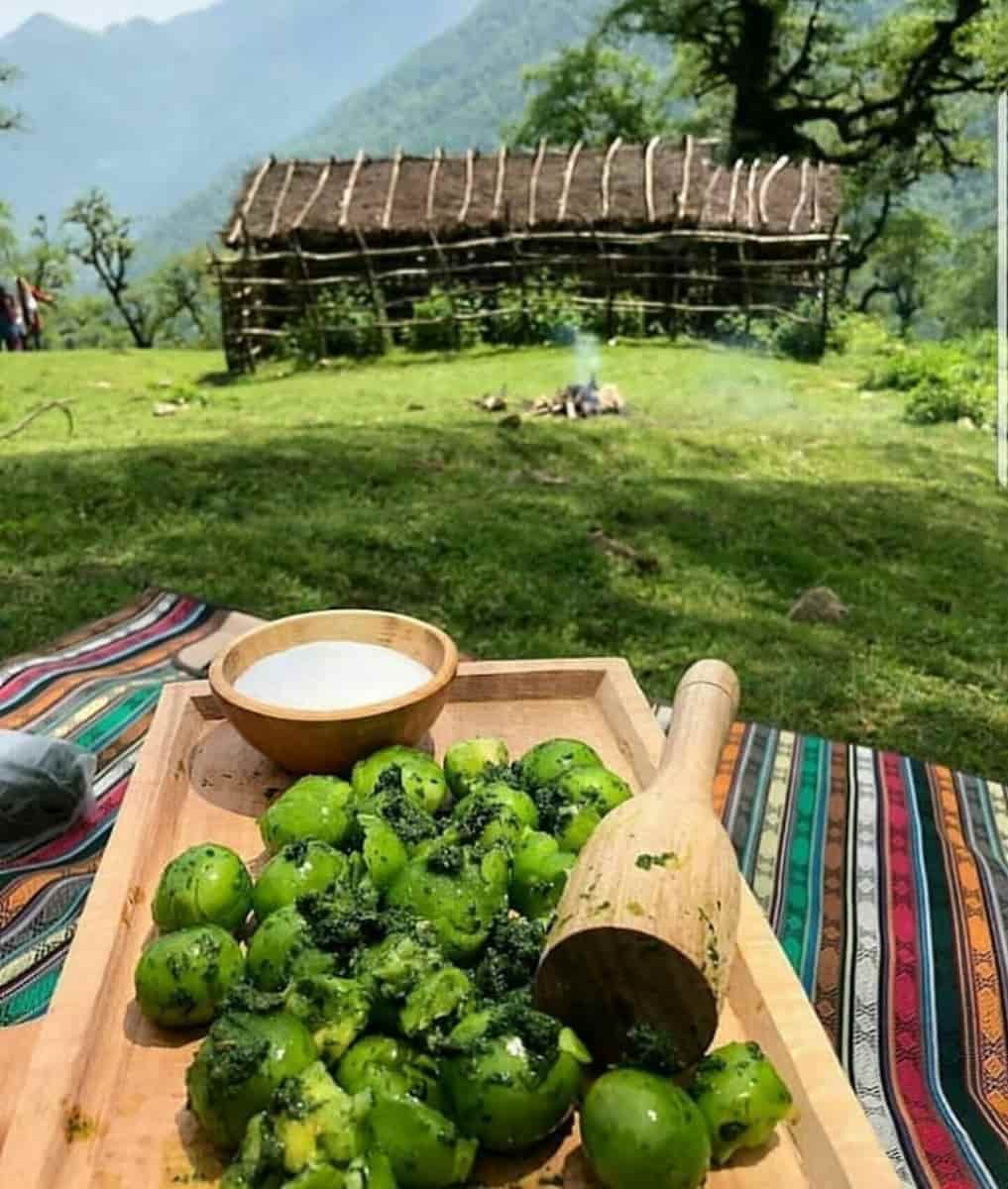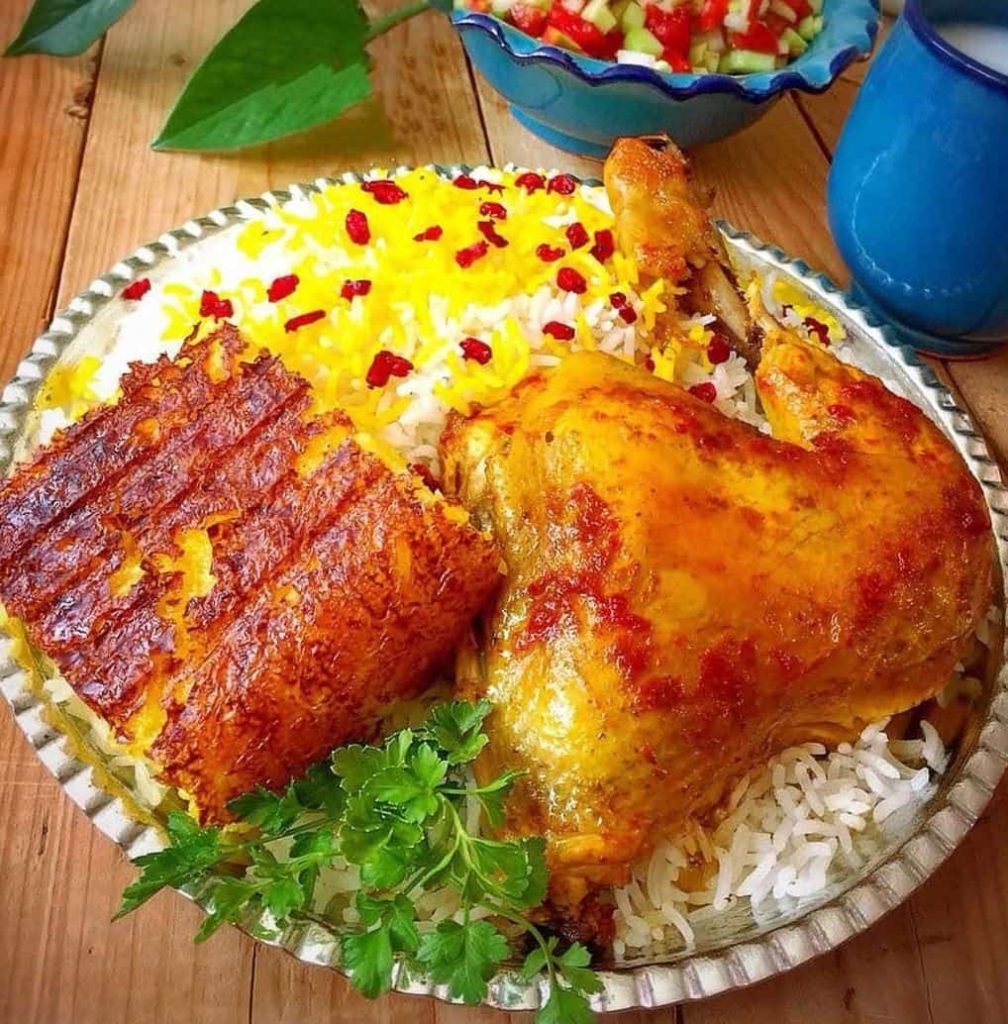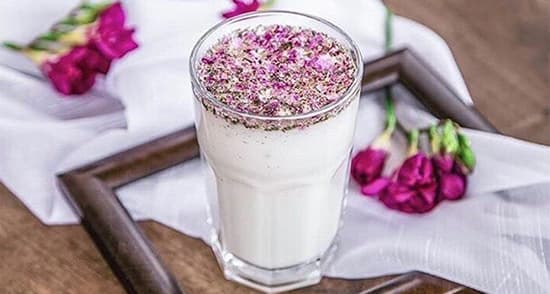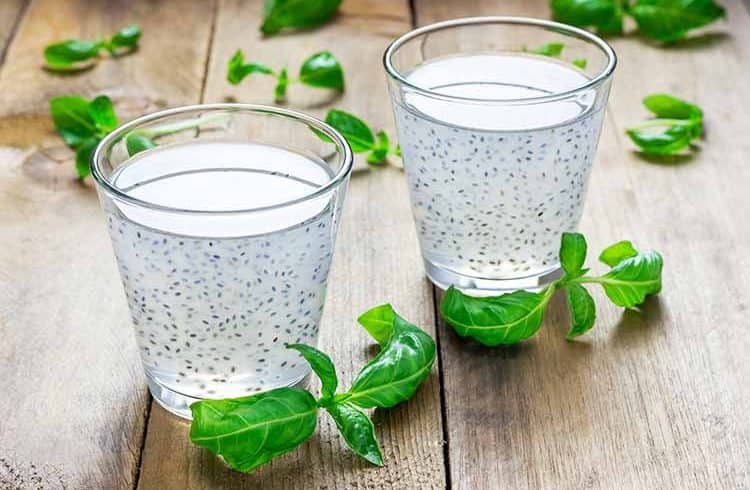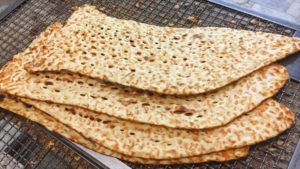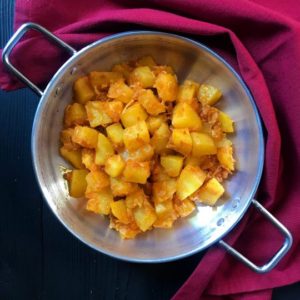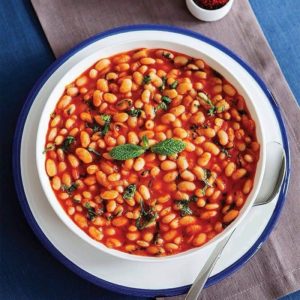Iran Food Guide | Eating & Drinking in Iran
“Food love is the Most Honest Love in the World”
Foods create the strongest memories of the trip, as their aroma and taste will bring you back to the mood of your trip in the coming days and years.
Undoubtedly, returning home with delicious new food recipes is one of the best souvenirs for any trip.
Iran is an attractive country. It doesn’t matter why you are here, whether it’s for fun and sightseeing or business. We all have to eat, so why not to use this time and try delicious Iranian food. You might be surprised by how many fun foodie things there are to do in Iran.
Iranian Food Culture
In Iranian lifestyle, food and Sofreh( table-clothe) is highly respected. In Iranian food culture, it is widely believed that food is God’s blessing. So, disrespectful food is equivalent to disrespect the Creator.
Iranians are good cooks. Their variety of food is high and they use the most valuable and healthy ingredients to cook their traditional food. The taste of Iranian food is not something that you will forget after the plane takes off from the runway, you will always remember the patience of Iranians to cook food.
Iran is a Halal destination. Halal is referring to food and activities that are allowed by Islam. Halal food must have halal meat. Hotels and restaurants are only allowed to serve halal food, and the use of pork and any alcoholic beverages is forbidden. Even on Iranian airlines, no pork products and alcoholic drinks served.
In the Iranian food culture, family members sit on the ground, around the sofre(tablecloth), and enjoy the main meals together. Iranians eat with spoon and fork, and because of their food culture, a knife is rarely needed. If they wrapped food in bread called it loghmeh and they have eaten loghmeh by hand. The most important element of Iranian food is called Polo or Chelo (Persian rice).
Appetizers, main dishes, and desserts are placed on the sofreh or table at the same time and people use them in order.

Top Persian Food
If you are looking for a list of delicious, famous and traditional Iranian dishes, follow me until the end.
Chelo Kabab Koobideh
Without a doubt, Cheloo Kebab is the most famous Iranian dish. Chelo kebab is usually served with grilled tomatoes, saffron rice, dough, and fresh vegetables. Sometimes they eat kubide with bread instead of rice. It is interesting to know that there are many types of kebabs in Iran and they are cooked in different ways, the most famous of them is Koobideh.

King of traditional Iranian food is Khoresht-e Ghormeh Sabzi (Persian Herb Stew)
If you ask many Iranians about their favorite food, they will probably say Ghormeh Sabzi. It’s traditionally served white Saffron rice (polow). This stew is prepared with plenty of fragrant vegetables, onions, dried Persian limes (limoo amani), red beans and, mutton or lamb meat. The secret of delicious Ghormeh Sabzi, like many Iranian dishes, is the time it takes to cook. It should be slowly on a low flame.
The experience of eating it, will surely be interesting and attractive for you.
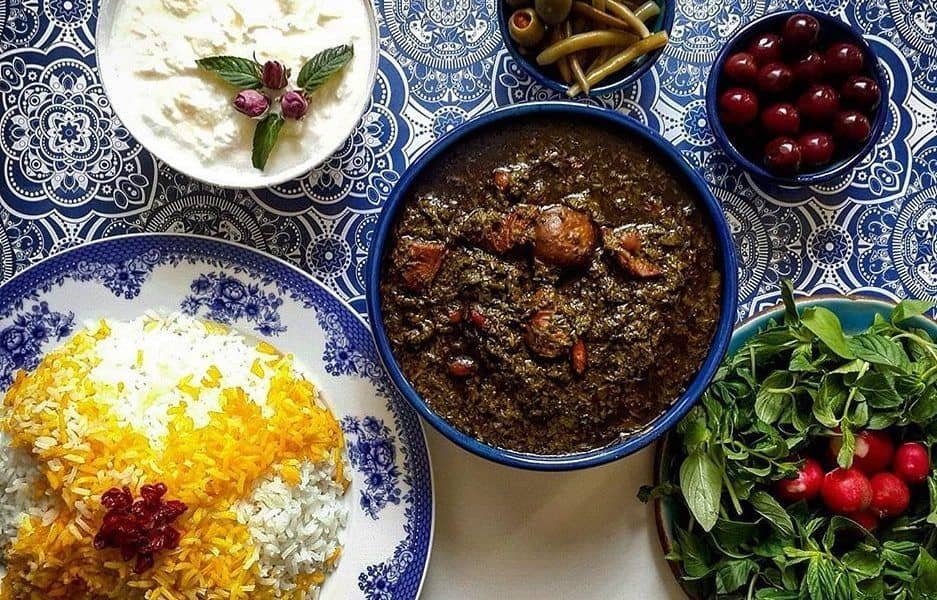
Dizi or Abgoosht
Dizi which is also called Abgoosht is one of the most traditional Iranian dishes. It’s a simple and delicious food leftover from the nomads and also one of the rich food which is a good source of protein. It served with fresh herbs, yogurt, and bread. The major ingredients are meat and beans. Abgoosht is a suitable dish for winter.
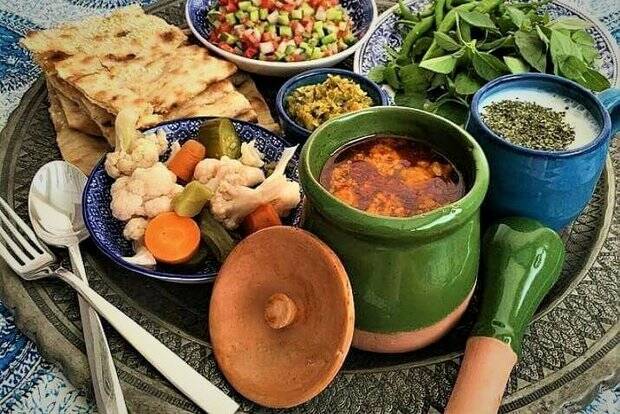
Zereshk Polo (Persian barberry rice with chicken)
Zereshk Polo (Barberry Rice) with chicken is one of the most delicious Iranian dishes that has become very famous in the world. This dish prepared from a combination of barberry, saffron, and white rice, and in addition to its extremely delicious taste, it has a very beautiful and majestic appearance, so you can find it in restaurants as well as weddings and most celebrations.
Sabzi Polo Mahi (herb rice with fish)
Sabzi polo with fish is a popular traditional food for most Iranians. They prepare this food for New Year (Eid Nowruz) night, and since all the customs of Nowruz are symbolic and there is wisdom behind all Iranian customs, there are different narrations for eating this food. The main ingredients of this dish are rice, fish, and vegetables, which are made from coriander, leeks, parsley, and fresh garlic leaves.
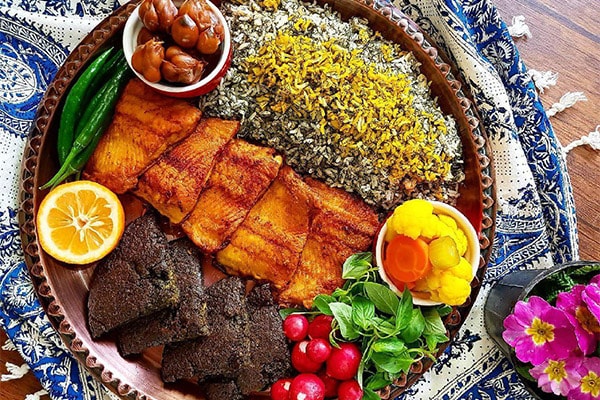
Shishlik Mashhad
Shishlik is another kind of Iranian kebab. If you come to Mashhad on your trip to Iran, be sure to try Shishlik. The best and most delicious Shishlik kebabs in Iran are cooked in Torqabeh and Shandiz areas (about 30 minutes outside the Mashhad).it is made up of six slices of fresh mutton with the bones. Traditionally, it served with rice or bread and grilled tomato, white side dishes, such as onion, pickles, and fresh vegetables.

Ash Reshteh (Persian Legume Soup)
Ash is one of the traditional Iranian food. There are many types of Ash in Iran and each city has its recipe, but Ash Reshteh is the most famous that it served as a starter or main dish. It is a delicious combination of beans and vegetables. Decorating on Ash is very important and many Iranians are very good at it. They decorate it with hot onions, hot garlic, hot mint, and curd.
I highly recommend vegetarian to try this food.
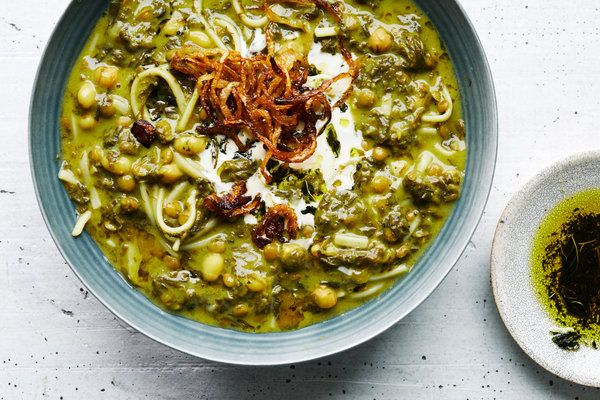
Persian Drinks and Beverages:
Iranians, like other people in the world, have two types of hot and cold drinks. Tea is the most popular hot drink. They use black tea and traditionally add natural flavoring ingredients such as rose petals or orange spring and cinnamon sticks to make it fragrant.
They serve tea along with traditional sweets such as Gaz, polaki, and Nabat but Sugar cubes (ghand) are more common. Tea is one of the main pillars of Iranian food culture.
Doogh is also a traditional cold drink that is consumed with main meals and flavored with mint powder. Other famous Iranian drinks are Tokhm-e Sharbati( basil seed) that has so many benefits for health, Khakshir that It consists of tiny reddish-brown seed and suitable for summers. I highly recommend you try Sharbat Bidmeshk-Nastaran while you are in Shiraz.
All kinds of alcoholic beverages are banned in Iran.
List of Iranian Bread – Different Type of Bread in Iran
Bread is an important part of the Iranian lifestyle. Most of Iranian eat bread (Nan) every day. Bread has long been highly respected among Iranians. Perhaps the main reason for this is our belief in the blessings of wheat and the effort it takes to achieve each wheat cluster.
There are various types of bread in different parts of Iran, but four types of bread are more popular among people.
Sangak BREAD (Nan-E-Sangak)
The most popular bread in Iran is Sangak bread, In addition to the delicious taste, Sangak bread has a higher quality than other bread. This type of bread is baked in an oven, on a bed of small stones, which is why it is called Sangak. Sangak in Persian means little stone.
Nane-E-Sangak mostly served with Kebab and Dizi.
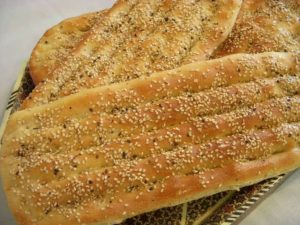
Barbari Bread
This bread is very popular in Iran and is especially delicious for breakfast with cheese. The thickness of this bread is 1 to 2 cm and its appearance is oval.
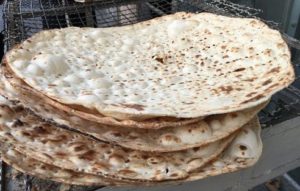
Taftoon Bread
This bread is often used in villages and is baked in a round shape with a thickness of 5 mm. Taftoon bread is much easier to bake than other bread.
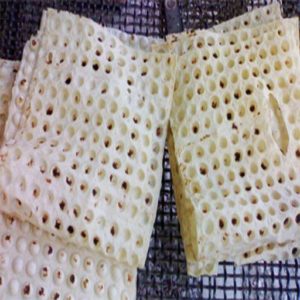
Lavash Bread
Lavash bread is the thinnest bread in Iran. This bread can be eaten at all meals. This bread is very soft and easy to eat.
Vegetarian Food Guide To Iran- Meatless in Iran
Most of the restaurants serve very limited vegetarian food.
Let me visually guide you to some popular vegetarian dishes in Iran:
Vegetarian Food in Iran
Kashk-e Bademjan (eggplant with whey sauce dip), which is one of the most popular Persian appetizers.
Boorani Bademjan is prepared by stewing baked eggplants (Bademjan) in a tomato garlic sauce.
Yatimcheh (eggplant with tomato sauce).
Different kinds of Kookoo (also spelled as KuKu), that is cooked with different vegetables. Kookoo Sib Zamini (Potato Patties), Kookoo Sabzi (with mixed herbs, walnut, and barberry), Persian Zucchini Frittata (Kookoo Kadoo).
Some rice-based that I can offer you are Estanboli Polo (Persian Tomato Rice with green beans), Dampokhte Gojeh (rice with tomato or in some region with potato), and Adas Polow (Lentil Rice).
Khoraak and Ash are the other good choice for vegetarians in Iran. I strongly suggest you try the Do Piazeh Aloo (potatoes, onions, and spices), it’s a traditional dish from Shiraz. Khorak Loobia (Pinto beans with tomato sauce) and Adasi (lentils).
Ash is one of the traditional dishes in Iran. It looks like soup. Ash has many different types and recipes; Ash Reshteh is one of the most famous ones. The other popular ash in Iran is Ash Jo, Ash Doogh, and Ash Anar.
Dessert
Iran has unique sweets and desserts that you will surely enjoy eating. I would like to introduce some of the best Iranian desserts to try them during your trip to Iran that could be a delicious experience for you.
Sholeh Zard (Persian Saffron Rice Pudding)
It’s one of the most delicious Iranian desserts that combine rice, water, saffron.
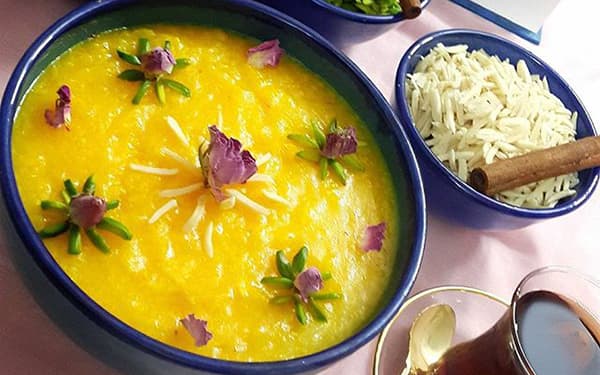
Zoolbia Bamieh
Iranians serve this dessert more during the holy month of Ramadan. Zoolbia and Bamie fried and soak in a syrup called Sharbat. Zoolbia is made with some ingredients such as flour, yogurt, oil, baking soda, and saffron. Eating this sweet dessert with our famous Iranian drink, tea, is a pleasant combination that I suggest you try.
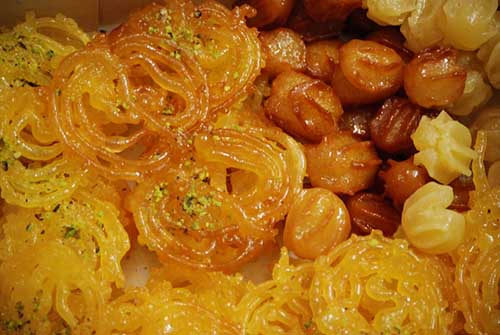
Falude and Traditional ice cream
The best Iranian dessert that you enjoy eating on hot summer days is faloodeh (also spelled Paloodeh) and traditional ice cream (called Bastani Sonati). This delicious Iranian dessert can be served together or separately according to personal taste, that in both cases, are particularly delicious. Faloodeh is usually served with a Lemon juice or Sour Cherry sharbat.
Please do not leave Shiraz without trying Faloodeh, you can find the best Faloodeh and Bastani around Tombs of Saadi and Hafez, on the northern side of the Karim Khan Citadel, Vakil Bazaar and some ice cream shop such as Baba Bastani.
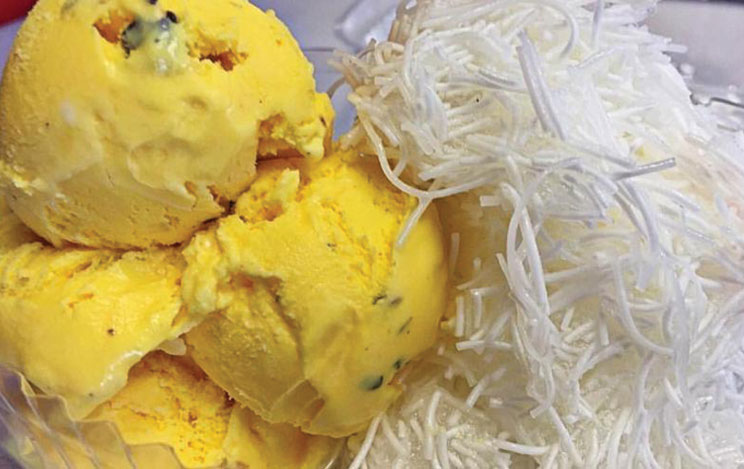
Ranginak
Ranginak is an old, wonderful tasty Iranian dessert that is made by dates in the southern cities of Iran. This traditional Iranian dessert is made by toasted wheat flour and walnut-stuffed dates.
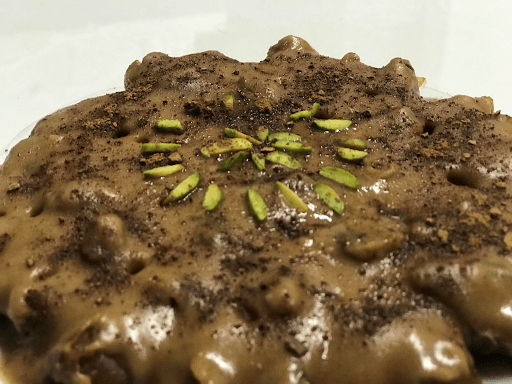
Halva
Iranian halva is different from other halva models in the Middle East, Iranians traditionally serve halva during religious ceremonies or funerals. The texture and sweetness of halva fascinate you. There are different type of halva in a different region of Iran has its recipe for halva.
Some other famous halva that I recommend you to try: Milk Halva (Halvaye Shir), Tar Halva, Date Halva (Halva khormayi).
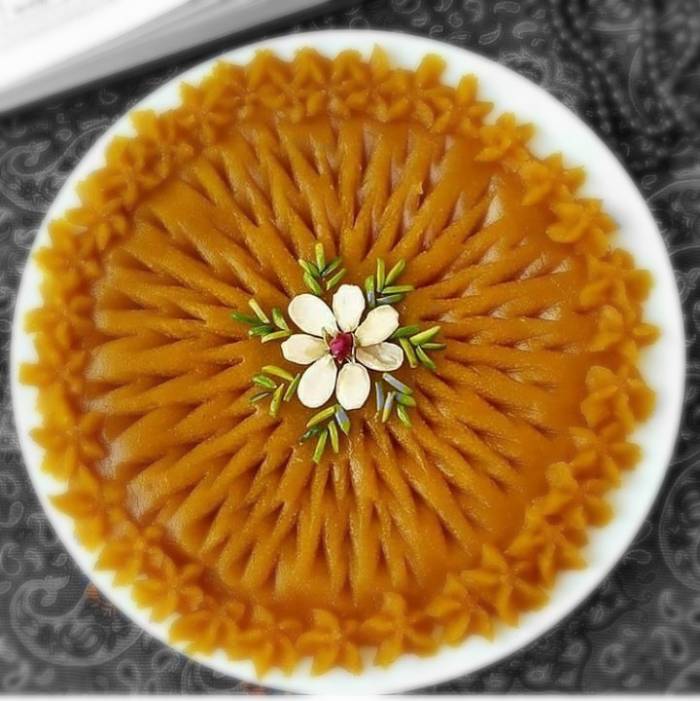
Good to know
If you travel to Iran in the summer, do not forget to try the green tomatoes (literally “green plums,” known as unripe cherry plums outside of Iran)! gojeh sabz is a fruit that is crisp and amazingly delicious with some salt. but I recommend you to try it with a delicious condiment called dallar. Which is actually a mixture of fragrant vegetables can be eaten with sour gojeh sabz or cucumbers.
